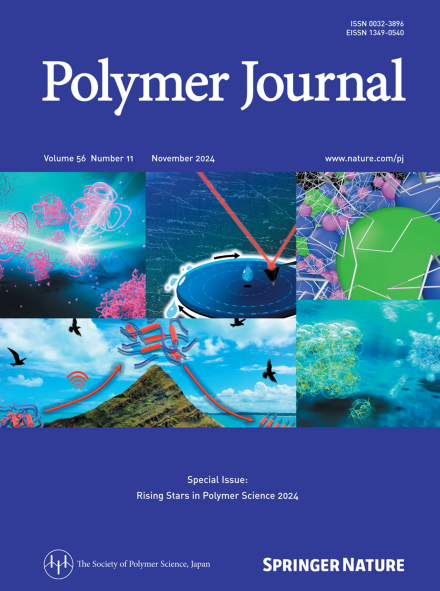Research on the preparation and performance of acrylic acid/methyl acrylate-modified starch catalyzed by an HRP binary initiation system
IF 2.7
4区 化学
Q3 POLYMER SCIENCE
引用次数: 0
Abstract
Acrylic acid (AA)/methyl acrylate (MA)-modified starch was prepared via a catalytic process involving horseradish peroxidase (HRP)/acetylacetone (ACAC) as an initiation system. The structural analysis results demonstrated that the grafting of AA and MA onto starch was successful. Furthermore, the impact of the grafting reaction conditions on the grafting effect and the characteristics of the resulting grafted products were also examined. The results demonstrated that AA and MA were successfully grafted onto starch. The optimal conditions for starch grafting with AA/MA were identified as a reaction time of 4 h, an HRP enzyme concentration of 12 U/mL, a total monomer/starch ratio of 4:6, and a molar ratio of AA/MA feeding of 3:7. The viscosity and viscoelasticity of the modified starch slurry increased, and the film-forming property was enhanced. Compared with the original starch film, the modified film markedly increased the flexibility and tensile strength. Furthermore, an increased acrylic acid content maintained the original hydrophilicity of the modified starch film. The horseradish peroxidase (HRP)/acetone peroxide (ACAC) binary system serves as an initiator to stimulate the generation of free radicals from starch, acrylic acid (AA), and methyl acrylate (MA). Simultaneously, while AA and MA undergo self-polymerization and copolymerization, they also get grafted onto starch chains through self-polymerization and alternating copolymerization. A substantial number of branched small-molecule chains are uniformly grafted onto the primary chain of starch with a low molecular weight.

在 HRP 二元引发体系催化下制备丙烯酸/丙烯酸甲酯改性淀粉及其性能的研究
以辣根过氧化物酶(HRP)/乙酰丙酮(ACAC)为引发体系,通过催化过程制备了丙烯酸(AA)/丙烯酸甲酯(MA)改性淀粉。结构分析结果表明 AA 和 MA 成功接枝到淀粉上。此外,还考察了接枝反应条件对接枝效果的影响以及接枝产物的特性。结果表明,AA 和 MA 成功地接枝到了淀粉上。确定了 AA/MA 接枝淀粉的最佳条件为:反应时间为 4 h,HRP 酶浓度为 12 U/mL,总单体/淀粉比为 4:6,AA/MA 进料摩尔比为 3:7。改性后的淀粉浆粘度和粘弹性增加,成膜性能提高。与原始淀粉薄膜相比,改性薄膜明显提高了柔韧性和拉伸强度。此外,丙烯酸含量的增加还保持了改性淀粉薄膜原有的亲水性。辣根过氧化物酶(HRP)/过氧化丙酮(ACAC)二元体系可作为引发剂,刺激淀粉、丙烯酸(AA)和丙烯酸甲酯(MA)产生自由基。与此同时,当 AA 和 MA 发生自聚合和共聚合时,它们也会通过自聚合和交替共聚合接枝到淀粉链上。大量支化的小分子链均匀地接枝到分子量较低的淀粉主链上。
本文章由计算机程序翻译,如有差异,请以英文原文为准。
求助全文
约1分钟内获得全文
求助全文
来源期刊

Polymer Journal
化学-高分子科学
CiteScore
5.60
自引率
7.10%
发文量
131
审稿时长
2.5 months
期刊介绍:
Polymer Journal promotes research from all aspects of polymer science from anywhere in the world and aims to provide an integrated platform for scientific communication that assists the advancement of polymer science and related fields. The journal publishes Original Articles, Notes, Short Communications and Reviews.
Subject areas and topics of particular interest within the journal''s scope include, but are not limited to, those listed below:
Polymer synthesis and reactions
Polymer structures
Physical properties of polymers
Polymer surface and interfaces
Functional polymers
Supramolecular polymers
Self-assembled materials
Biopolymers and bio-related polymer materials
Polymer engineering.
 求助内容:
求助内容: 应助结果提醒方式:
应助结果提醒方式:


